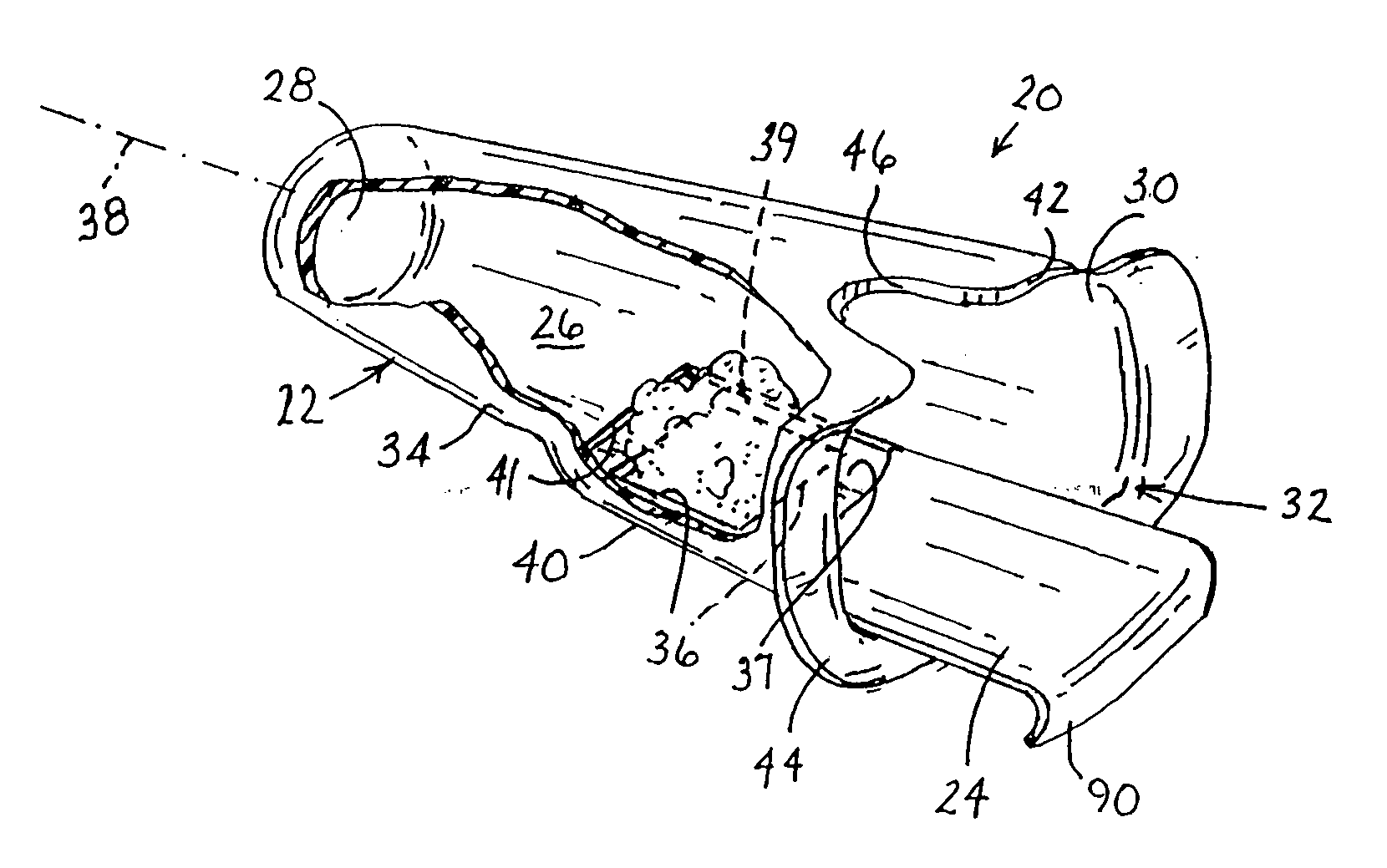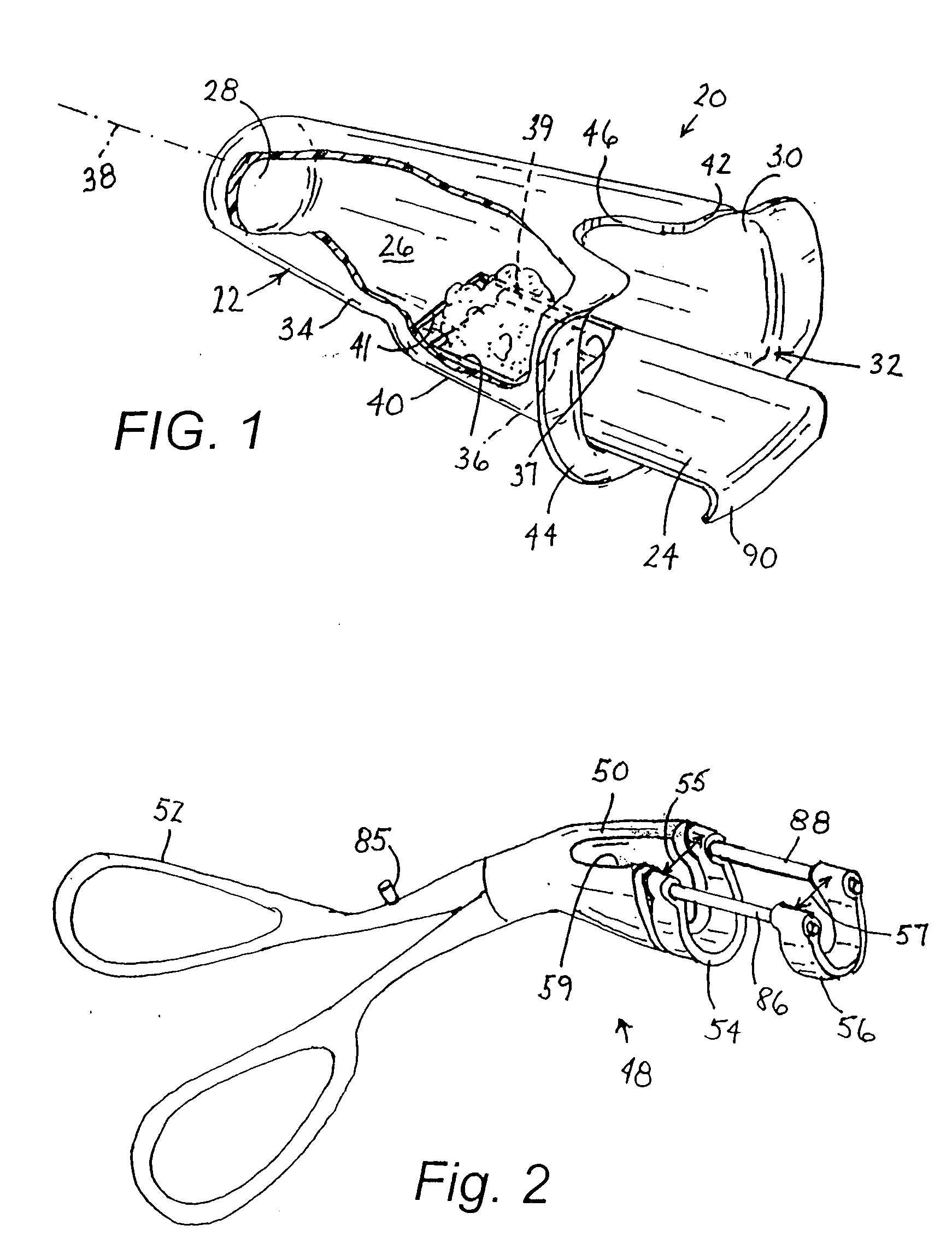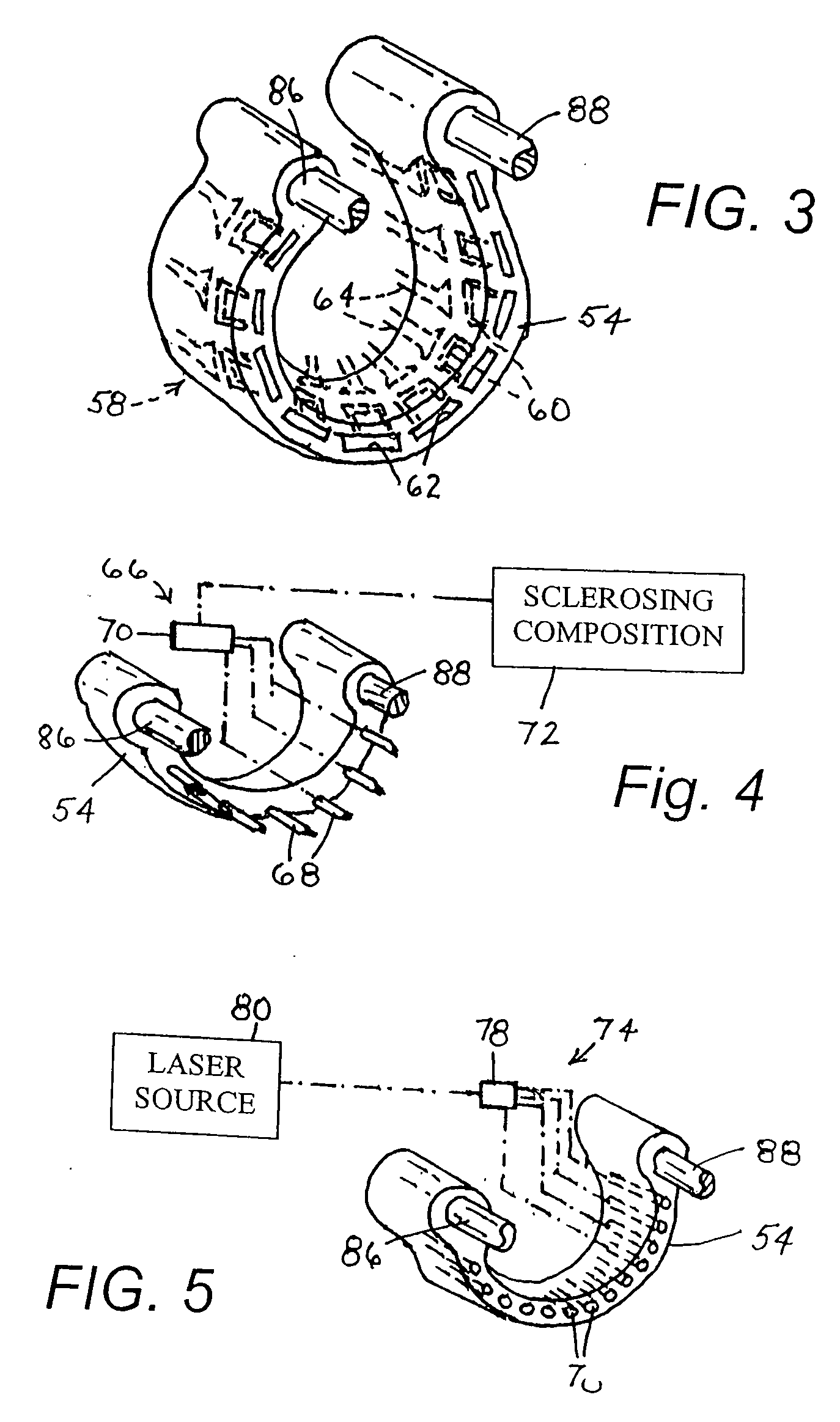Endoluminal treatment method and associated surgical assembly including tissue occlusion device
a technology of endoluminal treatment and surgical assembly, which is applied in the field of surgical treatment, can solve the problems of internal hemorrhoids that are prone to bleeding and prolapsing, ulceration of overlying tissues, and high cost, and achieve the effect of reducing work loss and interruption, and reducing cos
- Summary
- Abstract
- Description
- Claims
- Application Information
AI Technical Summary
Benefits of technology
Problems solved by technology
Method used
Image
Examples
Embodiment Construction
[0070] As illustrated in FIG. 1, an anoscope 20 for hemorrhoidal surgery comprises a hollow body 22 and a shutter member 24. Hollow body 22 defines a longitudinal channel or lumen 26 that is closed at a distal end 28 and formed with an opening 30 at a proximal end 32. Opening 30 enables visual inspection of a surgical site and the insertion of instrumentation. Hollow body 22 has a sidewall 34 provided with a rectangular window 36 spaced from distal end 28 and preferably also from proximal end 28 of hollow body 22.
[0071] Shutter member 24 is movably mounted to hollow body 22 to cover window 36 during a positioning of anoscope 20 in an anal canal. Shutter member 24 is removable from window 36 to permit hemorrhoidal tissues to protrude through window 36 into anoscope channel 26. More specifically, shutter member 24 is slidably mounted to hollow body 22, is disposed in hollow body 22, and has a shape conforming to sidewall 34 in a region thereof about window 36.
[0072] Shutter member 2...
PUM
 Login to View More
Login to View More Abstract
Description
Claims
Application Information
 Login to View More
Login to View More - R&D
- Intellectual Property
- Life Sciences
- Materials
- Tech Scout
- Unparalleled Data Quality
- Higher Quality Content
- 60% Fewer Hallucinations
Browse by: Latest US Patents, China's latest patents, Technical Efficacy Thesaurus, Application Domain, Technology Topic, Popular Technical Reports.
© 2025 PatSnap. All rights reserved.Legal|Privacy policy|Modern Slavery Act Transparency Statement|Sitemap|About US| Contact US: help@patsnap.com



